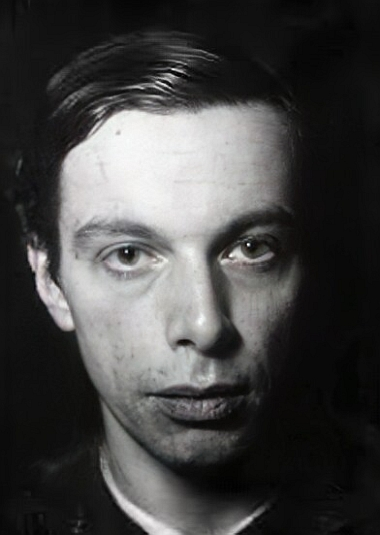
Ernst Ludwig Kirchner
Ernst Ludwig Kirchner the impetus of the Die Brücke group, was renowned as one of Germany's most talented and influential Expressionists.
Grappled with the same anxieties that defined the movement — concerns about humanity's place in the modern world and a loss of spiritual and authentic connection — Kirchner revived the traditional art of woodblock printing, positioning himself within the German artistic tradition, yet rejected academic styles and drew inspiration from the modern city.
Biograph of Ernst Ludwig Kirchner
Ernst Ludwig Kirchner was born on May 6, 1880, in Aschaffenburg, Bavaria. At the urging of his parents, he started studying architecture at the Dresden Technical High School in 1901. During his studies, Kirchner formed a close friendship with Fritz Bleyl, who shared his progressive views on art and nature. Influenced by this relationship, Kirchner decided to abandon architecture in favor of pursuing a career in fine art.
In 1905, Kirchner, along with Fritz Bleyl, Karl Schmidt-Rottluff, and Erich Heckel, founded the artist group Die Brücke ("The Bridge"). Their goal was to move away from traditional academic styles and forge a new form of artistic expression, creating a "bridge" between classical motifs and contemporary avant-garde. Die Brücke was known for its intense emotions, conveyed through bold, crude lines and a vivid, unconventional color palette.
The group often gathered in an old butcher’s shop, which served as Kirchner’s studio, to practice figure drawing. These studio meetings sometimes turned into informal gatherings featuring casual lovemaking and nudity. The artwork of Die Brücke was heavily influenced by Albrecht Dürer’s graphic work and the vivid colors of the Neo-Impressionists. Kirchner, in particular, was inspired by Dürer’s woodcarvings and sought to modernize them with his own distinct style of simplified lines and dynamic compositions.
In 1906, Kirchner and Die Brücke held their first group exhibition in a lamp factory, showcasing primarily female nudes inspired by their late-night studio gatherings. One notable piece from the exhibition was Kirchner's woodcut print "Nude Dancers" ("Nackte Tänzerinnen", 1909), which captured the exhibition’s energetic spirit with its bold, graphic lines depicting naked women dancing on a stage.
Die Brücke came to an end in 1913, marked by Kirchner's publication of *Chronik der Brücke* (*Brücke Chronicle*), a work that emphasized the "freedom of life and movement" in contrast to the established artistic conventions of the time.
Kirchner voluntarily enlisted in the military in 1915 but was soon released due to a nervous breakdown. He spent time recovering in several Swiss hospitals between 1916 and 1917. Deeply affected by his military experience, Kirchner moved to a farmhouse in the Alps near Davos in 1918, where he found inspiration for a series of mountain landscapes.
During the 1920s, Kirchner’s reputation as a leading German Expressionist grew, with exhibitions in Switzerland and Germany enhancing his prominence. In 1926, his first monograph and catalog of graphic works were published. He was commissioned to create murals for the Folkwang Museum in 1927 and was invited to participate in the Venice Biennale in 1928. His success continued in 1931 when he became a member of the Prussian Academy of Arts.
However, in 1933, the Nazi regime denounced Kirchner as a "Degenerate artist," leading to his resignation from the Berlin Academy of Arts. Over 600 of his works were either seized or destroyed by the Nazis. The trauma from these events contributed to his decision to take his own life on July 15, 1938.
The Art of Ernst Ludwig Kirchner
The human figure was central to Kirchner's art, playing a crucial role in his studio-based works where he depicted models and elements of his bohemian lifestyle. For Kirchner, the studio was a vital intersection of art and life. The figure also influenced his portrayals of Berlin, where the demeanor of people in the streets often took precedence over the cityscape. Kirchner frequently depicted figures in motion, believing this approach better conveyed the vitality and essence of the human body.
Kirchner's Expressionistic approach to painting was a bold departure from the Impressionism that dominated German art when he began. Kirchner viewed this shift as a rebellion against the conventionality of bourgeois life. Although he claimed not to be influenced by other artists, it is evident that Henri Matisse and Edvard Munch significantly impacted his style. Fauvism, in particular, shaped his use of color, leading him to employ flat, unblended areas of color and simplified forms.
Kirchner believed that powerful, both invigorating and destructive, forces lay beneath the surface of Western civilization, and he saw creativity as a means to channel these forces. This belief informed his depiction of figures as often being in conflict with themselves or their surroundings. His interest in Primitivism, especially that of the Pacific Islands, stemmed from his view that such art provided a more direct representation of these elemental energies. Primitive art also guided Kirchner towards a more simplified approach to form, with a preference for rough, partially painted surfaces.
Ernst Ludwig Kirchner: The "Strassenbilder" Series of 1915
Following the dissolution of Die Brücke, Kirchner sought to establish his own artistic identity. He developed a fascination with industrialization and the sense of alienation experienced in urban environments. Shifting his focus from the female nude, he began exploring the streets of Berlin through his "Strassenbilder" series in 1915.
These paintings capture the vibrant life of modern Berlin against the backdrop of World War I and its cultural impact on Germany. Kirchner used bold, expressive brushstrokes and striking colors like blue, green, orange, and pink to depict crowds of people. His approach often involved skewed perspectives, with figures appearing to loom or tilt toward or away from the picture plane, deliberately breaking away from the academic conventions he had learned during his architecture studies.
Years:
Born in 1880
Country:
Germany, Aschaffenburg
Gallery: